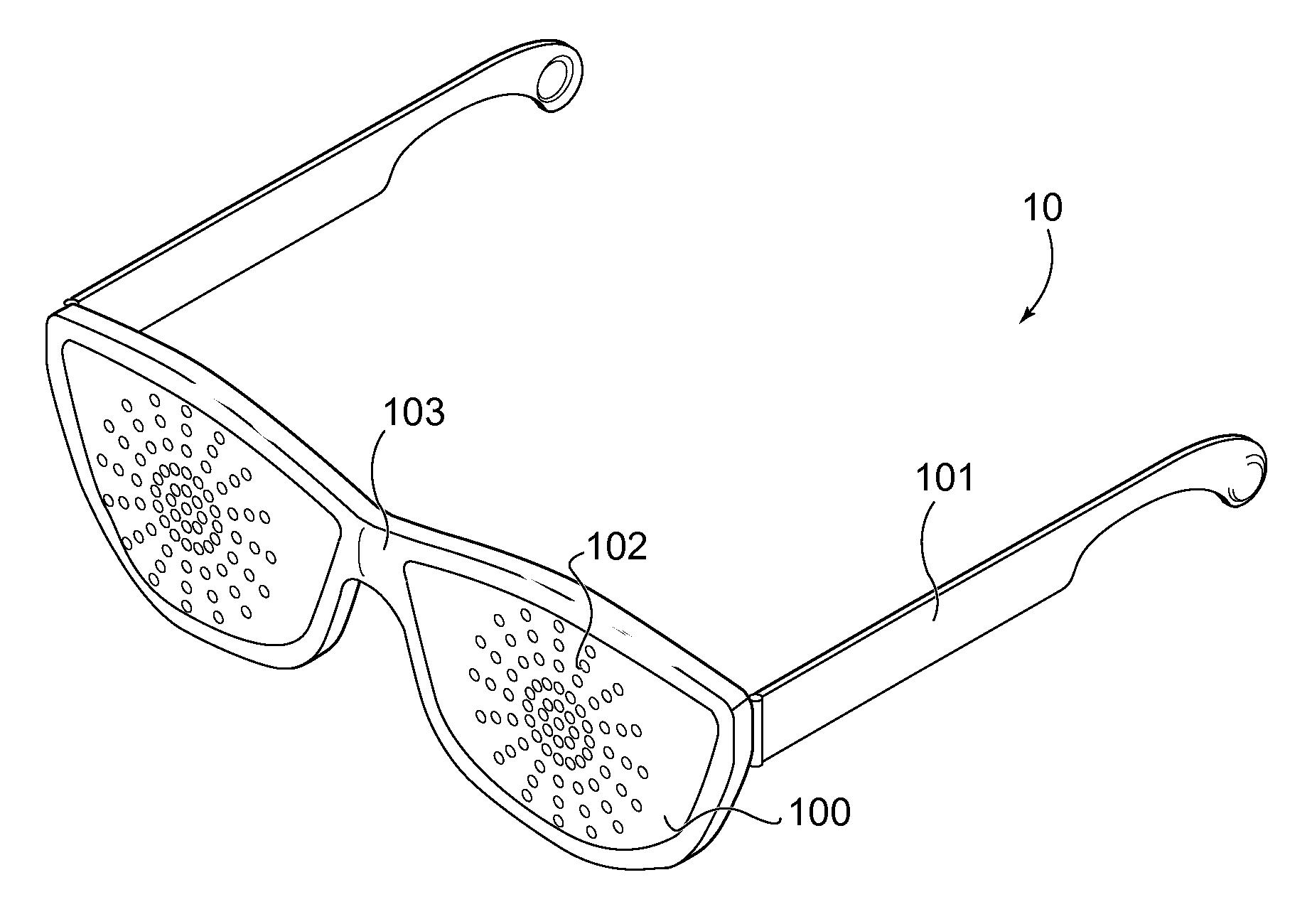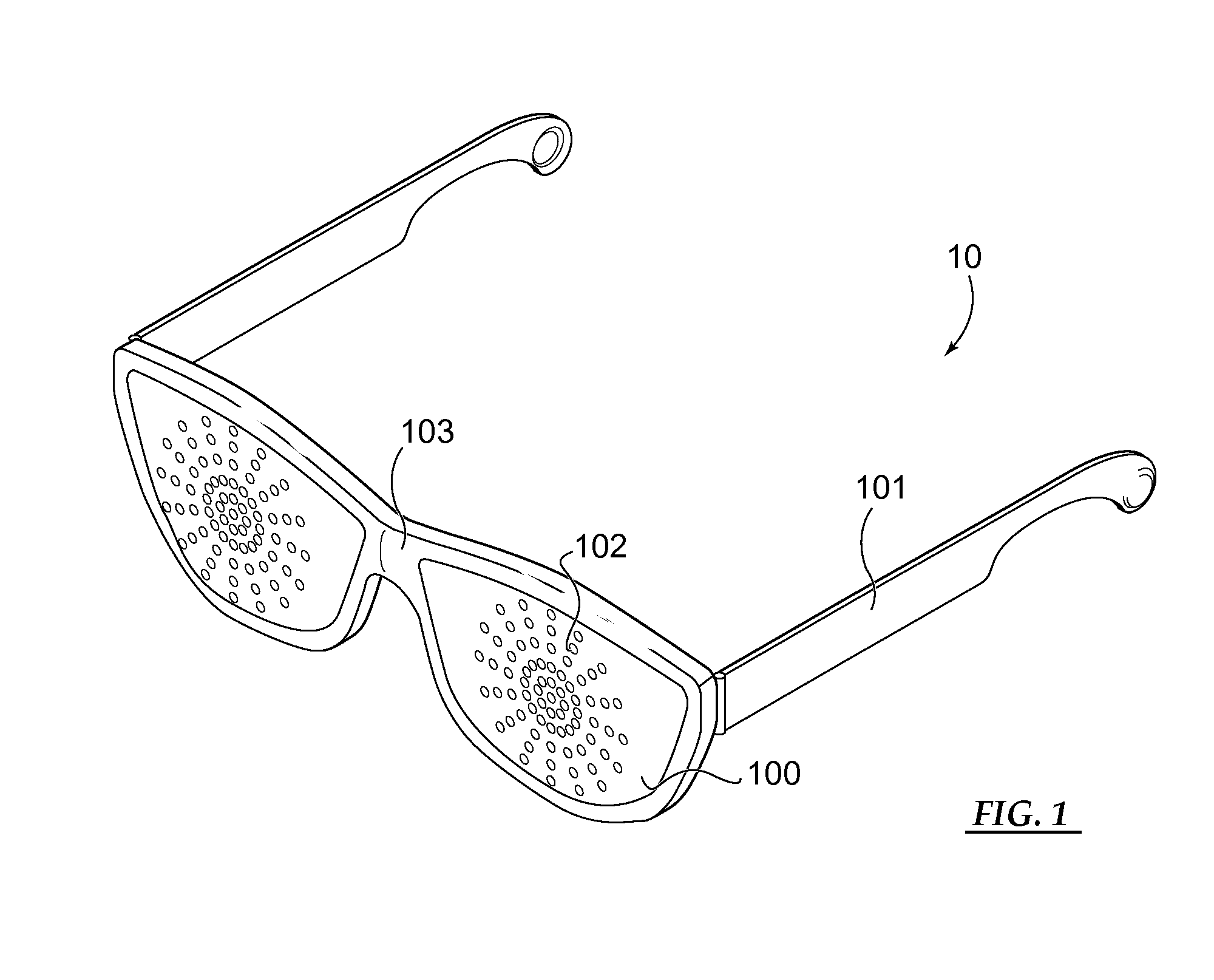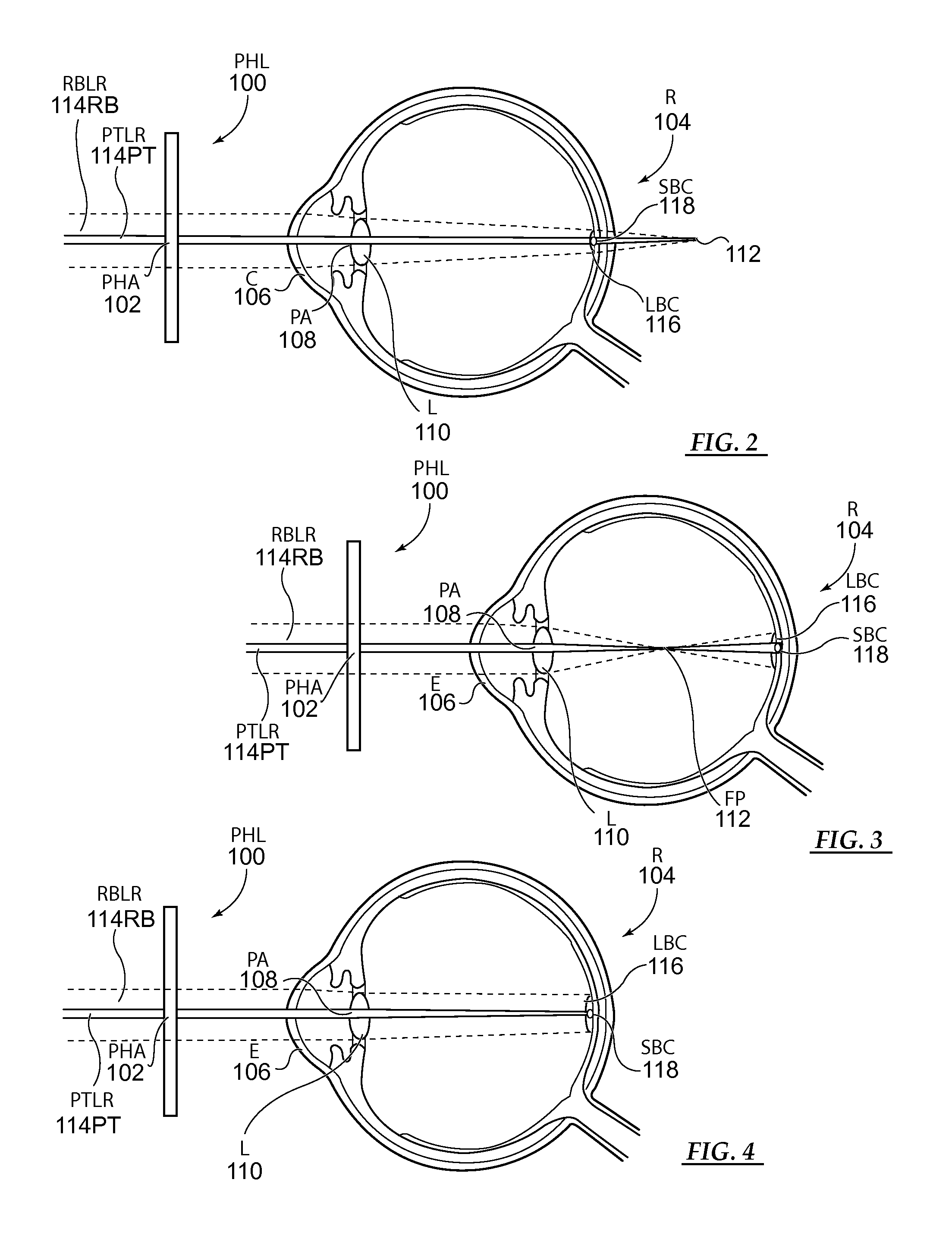Pinhole Glasses
a technology of pinhole glasses and glasses, applied in the field of pinhole glasses, can solve the problems of normalizing the working of the eye, not being able to correct or reduce the refractive problem, and not being able to counterbalance the refractive problem, so as to maximize light transmission, brightness and visual field, the effect of minimizing diffraction
- Summary
- Abstract
- Description
- Claims
- Application Information
AI Technical Summary
Benefits of technology
Problems solved by technology
Method used
Image
Examples
Embodiment Construction
[0020]Referring initially to FIG. 1, the pinhole glasses of the present invention are shown and generally designated 10. The pinhole glasses 10 include pinhole lenses 100 formed with a plurality of pinholes 102 along determined axes. Pinhole glasses 100 include pinhole lenses 102, temple bars 101 which are positioned on the ears, and frames 103 which surround and support lenses 102. Lens 102 can be a light amber-colored lens which reduces glare, but increases contrast and depth perception with minimal reduction of brightness, which has been a major problem in the prior devices. Additionally, the pinhole pattern placed on the back surface of the lens will be substantially obscured by coating the anterior surface of the lens with a mirror coating.
[0021]The lens in this invention will be thin and can be flat or curved, and will initially be clear, made of plastic, such as CR 39 and tinted amber. In addition, by providing a process of laser etching of the negative pinhole pattern on the...
PUM
 Login to View More
Login to View More Abstract
Description
Claims
Application Information
 Login to View More
Login to View More - R&D
- Intellectual Property
- Life Sciences
- Materials
- Tech Scout
- Unparalleled Data Quality
- Higher Quality Content
- 60% Fewer Hallucinations
Browse by: Latest US Patents, China's latest patents, Technical Efficacy Thesaurus, Application Domain, Technology Topic, Popular Technical Reports.
© 2025 PatSnap. All rights reserved.Legal|Privacy policy|Modern Slavery Act Transparency Statement|Sitemap|About US| Contact US: help@patsnap.com



